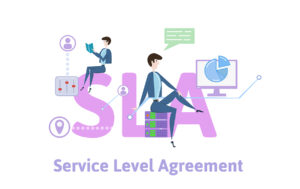Saturday, February 1, 2025
Why B2B is the Next Growth Lever for Consumer Subscription Businesses
The subscription economy is at an inflection point. The consumer subscription boom—spanning streaming, fitness, e-commerce, and digital services—is now facing rising acquisition costs, increasing churn, and subscription fatigue. As competition intensifies, high-volume subscription businesses must find new revenue streams beyond traditional DTC models.
For many, the answer isn’t just optimizing consumer retention—it’s unlocking a new customer base altogether. B2B expansion allows subscription businesses to tap into long-term contracts, higher LTV, and more predictable revenue streams.
Companies like Peloton, Spotify, The New York Times, and Shopify have successfully layered enterprise offerings onto their existing consumer models, unlocking higher lifetime value (LTV), more predictable revenue, and new customer segments. But moving into B2B isn’t just about adding an enterprise plan—it requires a shift in sales, pricing, operations, and customer support to succeed.
What You’ll Learn in This Series
This series, The B2C-to-B2B Growth Playbook, is designed for subscription executives who are considering—or are in the process of—scaling into enterprise. Each article in this series breaks down a critical aspect of B2B subscription growth, including:
? Why Now? The market shifts making B2B expansion a necessity for consumer brands
? The Challenges: What every subscription executive needs to know before making the leap
? How to Build a B2B Offering: The key components of a scalable enterprise model
? Balancing B2C & B2B: How to grow into enterprise without losing your consumer base
? The Future of Hybrid Models: How AI, automation, and new monetization strategies are shaping the next era of subscriptions
For subscription leaders, the opportunity is clear: B2B and B2C are no longer separate worlds. The future belongs to brands that master the hybrid model.
Ready to Scale? Let’s Dive In.
(Series article 2 of 5)
The Challenges of Moving from B2C to B2B (And How to Overcome Them)
Expanding into B2B is a high-stakes move. While enterprise subscriptions promise higher LTV, lower churn, and more predictable revenue, they also come with longer sales cycles, complex procurement hurdles, and vastly different customer expectations. Many B2C brands assume they can simply tweak their pricing and start selling to businesses—only to find themselves stuck in months-long sales negotiations, struggling with compliance requirements, and underpricing their offerings.
B2B success requires more than repackaging consumer offerings—it demands new sales structures, customer support expectations, and billing infrastructures. Many consumer brands underestimate these complexities, leading to costly missteps.
Below are the five biggest challenges subscription executives face when expanding into B2B and how to mitigate them.

1. Sales Model Shift: Moving from Self-Serve to High-Touch Sales
The Challenge:
B2C subscriptions thrive on automation. Customers discover, purchase, and cancel online with minimal friction—often without ever speaking to a human. In contrast, B2B sales rely on relationships. Large enterprises expect demos, procurement approvals, and contract negotiations before making a decision.
Where B2C Brands Struggle:
- Underestimating the length and complexity of B2B sales cycles.
- Lacking an outbound sales team or account management structure to nurture enterprise clients.
- Pricing too low—without considering procurement hurdles, budget cycles, and perceived enterprise value.
How to Solve It:
- Develop a hybrid sales motion—maintain self-serve options for SMBs, but introduce a sales-assisted model for enterprise buyers.
- Build a B2B sales team—account executives, sales engineers, and customer success reps will be essential.
- Adjust pricing models—consider annual contracts, volume-based pricing, or tiered licensing that aligns with enterprise needs.

2. Pricing & Packaging: Avoiding the ‘B2B Discount Trap’
The Challenge:
B2C subscription pricing is often straightforward and transparent, with monthly or annual plans. B2B pricing varies widely—some businesses prefer per-seat models, usage-based billing, or multi-year contracts. New B2B entrants often undervalue their offering, mistakenly thinking enterprise buyers expect lower pricing.
Where B2C Brands Struggle:
- Applying consumer pricing logic to B2B (e.g., offering discounts instead of structuring long-term contracts).
- Not segmenting pricing for different buyer personas (e.g., startups vs. Fortune 500s).
- Failing to bundle additional value—B2B buyers expect SLAs, onboarding support, analytics, and integrations.
How to Solve It:
- Package additional value – Include analytics, onboarding, and compliance support in enterprise plans.
- Segment pricing tiers – Don’t lump startups and Fortune 500s into the same pricing model.
- Use enterprise-friendly billing – Offer annual contracts and volume-based pricing.
Example Mistake:
A popular fitness subscription expanded into B2B by offering bulk discounts on consumer plans. Instead of boosting revenue, they attracted price-sensitive buyers who churned quickly, failing to generate long-term enterprise contracts. The mistake? They treated B2B like bulk B2C sales instead of designing an enterprise-grade offering.

3. Customer Support & SLAs: Meeting Enterprise Expectations
The Challenge:
B2C subscriptions operate on standardized support (email/chat/help docs), and most consumers accept minor service disruptions. Enterprise customers require high-touch support, dedicated account managers, and formal service level agreements (SLAs).
Where B2C Brands Struggle:
- Offering one-size-fits-all support that doesn’t meet enterprise buyer expectations.
- Underestimating the importance of SLAs—B2B clients expect uptime guarantees, rapid response times, and premium customer service.
- Not investing in post-sale account management, leading to churn when contracts are up for renewal.
How to Solve It:
- Develop a tiered support system—self-service for SMBs, priority support for mid-market, and dedicated account managers for enterprise clients.
- Introduce SLAs—clearly define uptime, response times, and escalation procedures.
- Invest in customer success—proactively engage B2B clients to ensure they see value, rather than reacting only when issues arise.

4. Customer Retention: The Long Game of Enterprise Renewals
The Challenge:
In B2C, churn is frequent but manageable—marketers use promos, engagement tactics, and personalized content to bring users back. In B2B, losing a single large contract can significantly impact revenue. Retention efforts must start well before renewal periods.
Where B2C Brands Struggle:
- Assuming B2B retention is automatic—enterprise buyers actively reassess contracts before renewing.
- Not engaging decision-makers consistently—end users may love the product, but procurement and finance teams control renewals.
- Failing to demonstrate ROI—B2B buyers expect data-driven proof of value, not just satisfaction surveys.
How to Solve It:
- Implement proactive renewal strategies—engage enterprise customers 6+ months before renewal, not just when the contract is expiring.
- Develop executive-level relationships—ensure finance and procurement teams see the business impact of your solution.
- Use a ‘Land and Expand’ Strategy—start with one department, prove value, then expand into other business units.
Example:
A SaaS company that initially sold to a marketing team later expanded into sales, customer support, and HR within the same enterprise.
Key Takeaways for Subscription Executives
- B2B expansion is not just a new revenue stream—it’s a strategic shift that requires new sales models, pricing strategies, and operational changes.
- Executives must plan for longer sales cycles, high-touch customer relationships, and increased complexity in billing and compliance.
- Successful B2B transitions require proactive retention strategies—losing even a few enterprise clients can impact revenue significantly.
Next Steps: How to Structure a B2B Offering for Long-Term Success
Now that we’ve covered the challenges, the next step is exploring how to design a scalable, high-value B2B subscription offering that aligns with enterprise needs without disrupting your core B2C business.
Read Next: How to Structure a B2B Offering for Long-Term Success
About Butter Payments:
Butter Payments, with its laser focus on seamless payment processing, recovers more failed payments and optimizes overall payment health, translating into 5%+ ARR growth for subscription businesses and uninterrupted service for users. Delve into Butter's vision for a frictionless payment future at www.butterpayments.com.
About Subscription Insider:
Subscription Insider is a leading resource for subscription businesses, providing critical analysis, industry updates, and proven practices to foster growth. Engage with our offerings and connect with a vibrant community of industry professionals at www.subscriptioninsider.com.
For more information and to secure your registration, head to www.subscriptionshow.com.